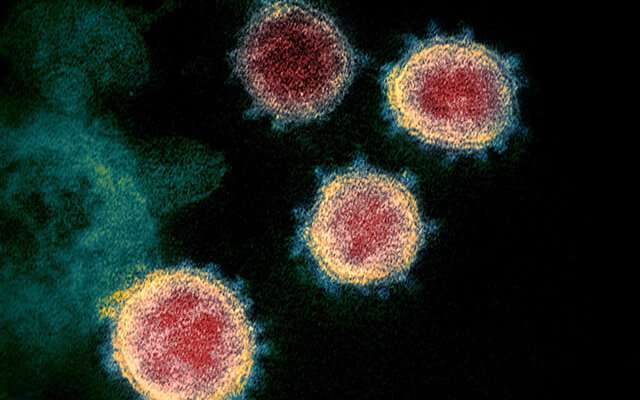
In the early days of the COVID-19 pandemic, the SARS-CoV-2 virus seemed only rarely to have serious complications in children. However, by April 2020, pediatricians had begun recognizing a syndrome in children who tested positive for COVID-19 involving hyperinflammation and some other attributes found in Kawasaki disease (KD). By May, the Centers for Disease Control and Prevention (CDC) had named the new condition Multisystem Inflammatory Syndrome in Children (MIS-C). Yet the biology of MIS-C and how it relates to or differs from severe COVID-19 in children has largely remained a mystery.
Now, researchers from Children’s Hospital of Philadelphia (CHOP) report important data that differentiate MIS-C from severe COVID-19 in children and suggest that MIS-C is a post-infectious syndrome related to COVID-19 but distinct from KD. The findings were published today in The Journal of Clinical Investigation.
“This is the first report comparing, head-to-head, the distinct outcomes of SARS-CoV2 in children and provides novel information on disease biology, as well as clinical information that can help practitioners distinguish between the clinical syndromes,” said Edward M. Behrens, MD, Chief of the Division of Rheumatology at CHOP, member of the Immune Dysregulation Frontier Program, and co-senior author of the paper. “The clinical and laboratory measures we describe accurately distinguish between patients with MIS-C and severe COVID-19, which will help physicians provide better, more accurate treatment for their patients.”
Differing Cytokine Profiles
The researchers, led by Behrens and fellow Immune Dysregulation co-senior authors David T. Teachey, MD, and Hamid Bassiri MD, Ph.D., analyzed 20 patients with SARS-CoV-2: nine with severe COVID-19 disease, five with mild COVID-19, and six with MIS-C. To differentiate the biology of these conditions, the research team looked at patients’ levels of cytokines, substances secreted by cells that send messages to the immune system and tell it what to do. When the body makes too many cytokines, the immune system to spins out of control, leading to severe inflammation and sometimes shock.
The researchers found that patients with MIS-C had elevated levels of two cytokines—IL-10 and TNF-? – whereas patients with severe or mild COVID-19 had no or minimally elevated levels of these cytokines. This profile for MIS-C is distinct from previously reported cytokine profiles in KD, which tend to be associated with mild elevations of other cytokines and not IL-10.
COVID-19 Connection
Additionally, the so-called viral cycle threshold—meaning how many times a test sample must be multiplied and amplified before SARS-CoV-2 is detected—also distinguished severe COVID-19 and MIS-C. Those with severe COVID-19 had low cycle thresholds, implying the virus was easily detectable and active, but those with MIS-C had high cycle thresholds, indicating the patient had been infected with the virus at some point in the distant past and had cleared most of the active virus. This bolsters the theory that MIS-C is a post-viral hyperinflammatory reaction to SARS-CoV-2.
Aside from patient cytokine profiles, which require sophisticated laboratory equipment, the researchers also found that simple peripheral blood smears could help distinguish the three conditions. Burr cells, which are red blood cells that appear scalloped or serrated when viewed under a microscope, were absent in patients with mild COVID-19 but present in 40% of patients with severe disease. However, all patients with MIS-C had at least some burr cells present, and more than half of them had the majority of their red blood cells appearing as burr cells on a peripheral blood smear.
MIS-C Distinct from Kawasaki
While the researchers did note some overlap in the clinical presentations of KD and MIS-C, they noted predominating symptoms did not overlap. Most patients in the MIS-C cohort had severe ventricular dysfunction at presentation, a finding that is unusual in KD. Patients with MIS-C also tended to have severe gastrointestinal inflammation, which combined with the cytokine data generated by the study, led the team to conclude that MIS-C is a distinct hyperinflammatory syndrome.
“Contrary to early reports that emphasized relatively mild disease outcomes in pediatric patients, we show that in some children SARS-CoV-2 appears to trigger a dysregulated hyperinflammatory pathophysiologic process,” Behrens said. “Future work will need to examine why SARS-CoV-2 induces such a damaging inflammatory response in children.”
Children’s Hospital of Philadelphia

